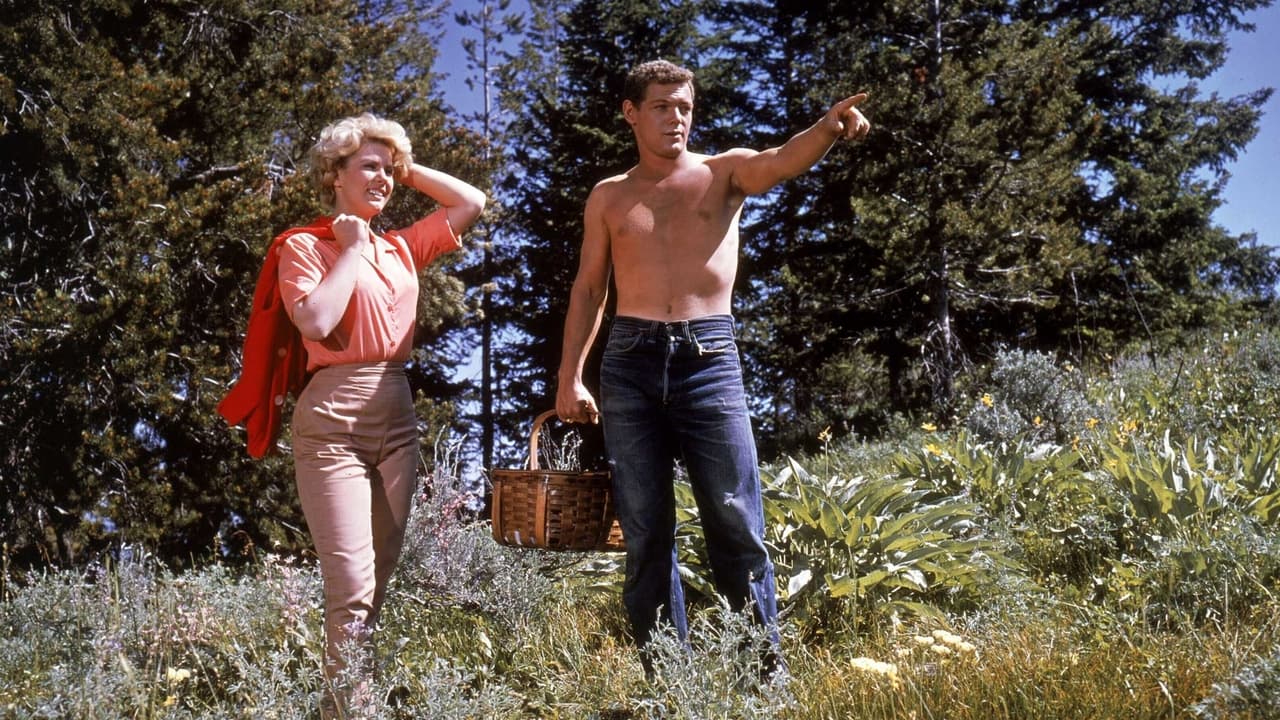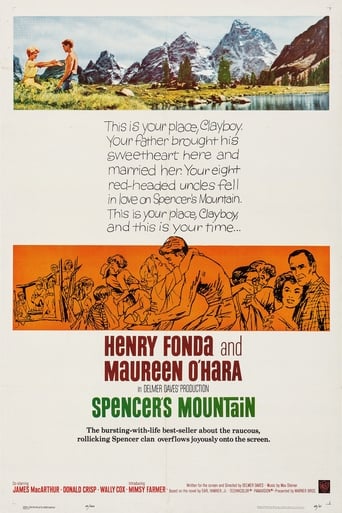

Well, time lapsed and changed, this film was just a bad production based on a mediocre novel that might only be suitable for teenagers to read. It involved so many supporting actors but all of them turned out to be just supporting to make this lousy film with some activities. The screenplay sucked big time, then directed by a non- talent guy who only succeeded by hiring a camera crew to shoot nice cinematography that anyone might be able to do the same if they could use such nice national park as the background of this bore-to-death film. There was nothing actually worth telling. What I got from what I saw in this film is those folks lived in that era got nothing to do, without smart phones, wi-fi internet, video games, action movies or even porn flix to kill the time, their only entertainment was having sex with their wives or husbands, so everybody, every family got so many kids. This is such a hollow and pretentious film, told nothing, gave nothing. I'd rather watch a slideshow that showed you how beautiful one of the National Parks, there's no need to involve so many people to tell you some hollow story supported with pretentious soundtrack, 'cause the music in this film was just typical in the early days in the later half 20th century. I just failed to see anything special about this film and the 2-star rating only means one for the beautiful scenery, the actual rating of this film would be minus 1. Don't let nostalgia to enlarge your patience like your prostate, simply not worth it, guys.
... View More"Spencer's Mountain" is an enjoyable family drama with touches of humor throughout. The outdoor scenery is spectacular. The film was shot in Grand Teton National Park, around Jackson Hole, WY, and in California. The movie is based on a 1961 novel of the same title, by Earl Hamner Jr. Some of the characters and experiences in the film are from his background, growing up near the Blue Ridge Mountains of Virginia during the Great Depression. Hamner would write another novel in 1970 that further expands on his boyhood growing up as the oldest child in a large family. That book, "The Homecoming: A Novel About Spencer's Mountain," led to the 1971 movie by the same title that in turn spawned the nine-year TV series, "The Waltons."I don't know why this film was set in Wyoming instead of Virginia, but the expansive shots of the scenery could be one reason. By the middle 20th century, it would have been hard to find shots like that in Virginia that didn't show much more modern development. "The Homecoming" was also shot in Wyoming in 1971, although the story was clearly set in Virginia. Many people who watched the later film and then the Waltons on TV (1972- 81) didn't know that this movie was part of Hamner's story of Walton's Mountain as well. The cast of "Spencer's Mountain' is very good. Henry Fonda excelled as Clay Spencer. Another reviewer commented about the types of role he played, and I agree that Fonda was best with this type of role. He also was good with dramatic roles, but he didn't have the stuff for comedy. He was mildly OK in a couple that he made, but not too good in the others. That's probably why he made so few comedies. His forte in Westerns was as the bad guy.Maureen O'Hara is wonderful as Olivia Spencer and James MacArthur plays Clayboy. That's the role that Richard Thomas had in the later film and the series as John-Boy. The rest of the cast are all quite good. This is a somewhat different story than what Hamner writes for the Waltons. The special home that Clay starts to build for Olivia, and then the fire that destroys it. It's an interesting and entertaining movie that most should enjoy.
... View MoreWhenever I see "Spencer's Mountain" (1963) I can't help doing a compare and contrast with "Sometimes a Great Notion" (1970). There is the obvious Henry Fonda patriarch connection; Clay Spencer and Henry Stamper being essentially the same character with much the same "never give an inch" relationship to their respective environments. Clay Spencer is a bit more bending and a bit less self-involved than Henry Stamper, but Fonda did not have to stretch much for the role replication. And there is the obvious parallel between the logging accidents. And the showcasing of dazzling wilderness beauty.But just as Earl Hamner Jr. was no Ken Kesey, "Spencer's Mountain" is no "Sometimes a Great Notion"; if for no other reason than the differing energy levels of the two films. One could accurately describe it as what "Sometimes a Great Notion" would be if Kesey had heavily sedated himself on an overdose of "The Waltons". Interestingly the novels were released in 1961 and 1964 respectively so it is at least possible that Hamner influenced Kesey.And both novels and films strip down to stories about the collision between the traditional and the modern, the past and the present. Although Kesey's story is far more gritty and far more ambitious, they are more similar in theme and style than they appear at first glance (I suspect that both authors would be horrified by this notion).The film version of Spencer's Mountain" suffers in any comparison by the relative weakness of its cast. Fonda is a constant and Veronica Cartwright (as Becky Spencer) makes you wish she had a bigger part, but the rest of the cast is borderline embarrassing; saved only by the one-dimensional nature of their parts. Kym Karath's "Pattie-Cake Spencer" manages to recapture, 20+ years later, the most irritating qualities of Phronsie Pepper. In fairness to James MacArthur, he manages to portray the mega earnest Clayboy Spencer accurately, but this early version of John-Boy Walton is truly cringe-worthy. MacArthur's scenes with 18 year-old ingénue Mimsy Farmer, however, play on a much higher level and nicely illustrate that it was possible in conservative days to create a smoking sexual tension without anything even remotely explicit.Then again, what do I know? I'm only a child.
... View MoreQuarry employee Henry Fonda, living on a cows-and-chickens estate in Wyoming with his wife and nine children, works on building the couple's dream home in the hills while also trying to get his book-learnin' eldest son into college. Sudsy adaptation of Earl Hamner Jr.'s thinly-disguised memoir, which led in due course to TV's "The Waltons", is full of now-familiar elements: the whiskey-sippin' grandpa, the gaggle of young 'uns who bathe together in one tub, the fiery-tempered Mrs. (Maureen O'Hara, giving us nothing new) who asks her husband to work overtime so she can buy her son a graduation ring, the funeral which brings all the scattered relatives together. Given a pictorial sheen by writer-director Delmer Daves and his team of cinematographers, this location-rich drama is so well-intentioned that it becomes rather turgid. James MacArthur seems a tad mature to be just coming-of-age and noticing girls, though Daves feasts on his creamy skin and masculinity--the only instance where the director gets some sensuality going (it sure isn't there between the adults). "The Waltons" usually managed to add a dash of vinegar to its mix of homilies and cracker-barrel wisdom; here, when papa Fonda explains sex to son MacArthur by saying, "Just remember, you ain't no bull and she ain't no cow," the incredulous will not be won over. ** from ****
... View More